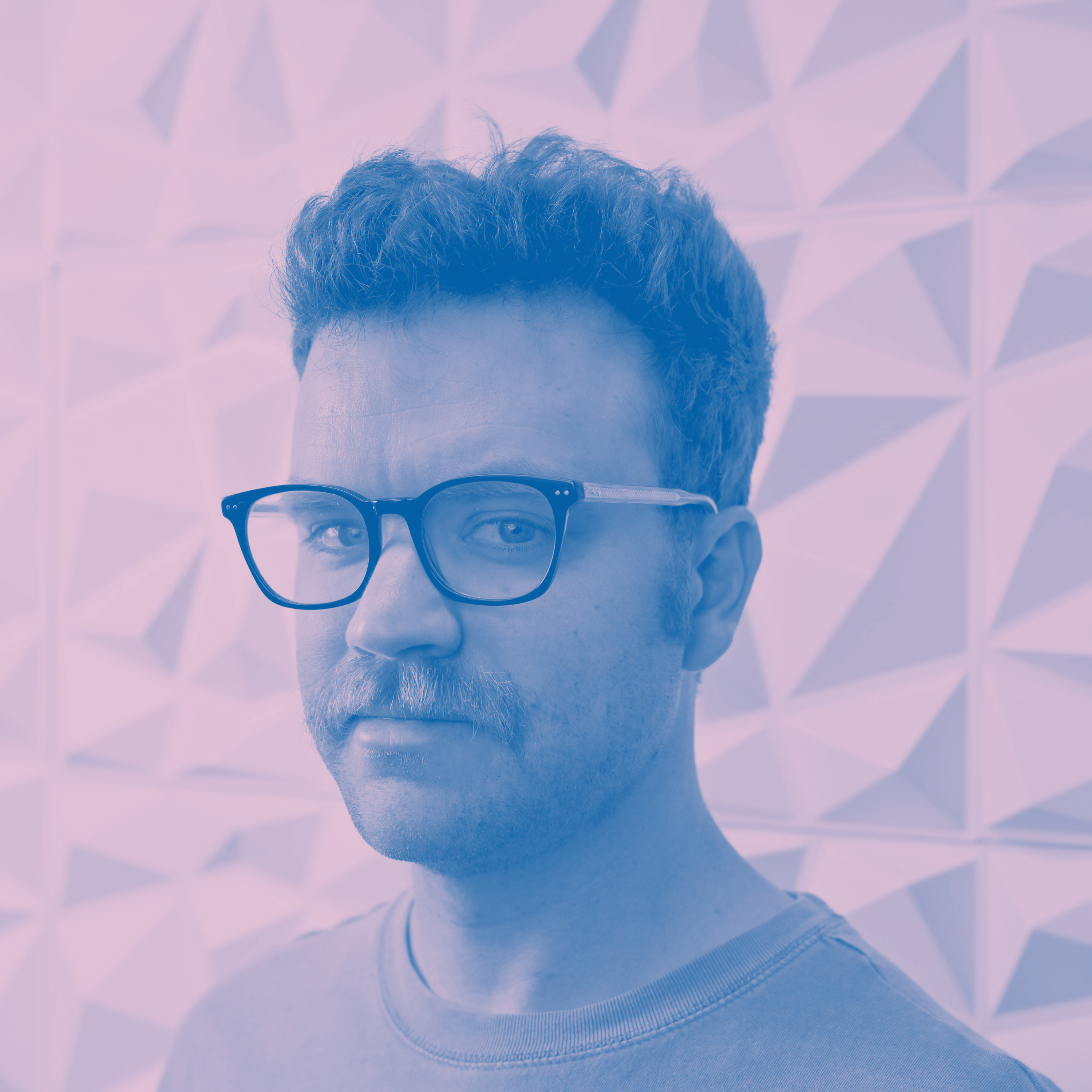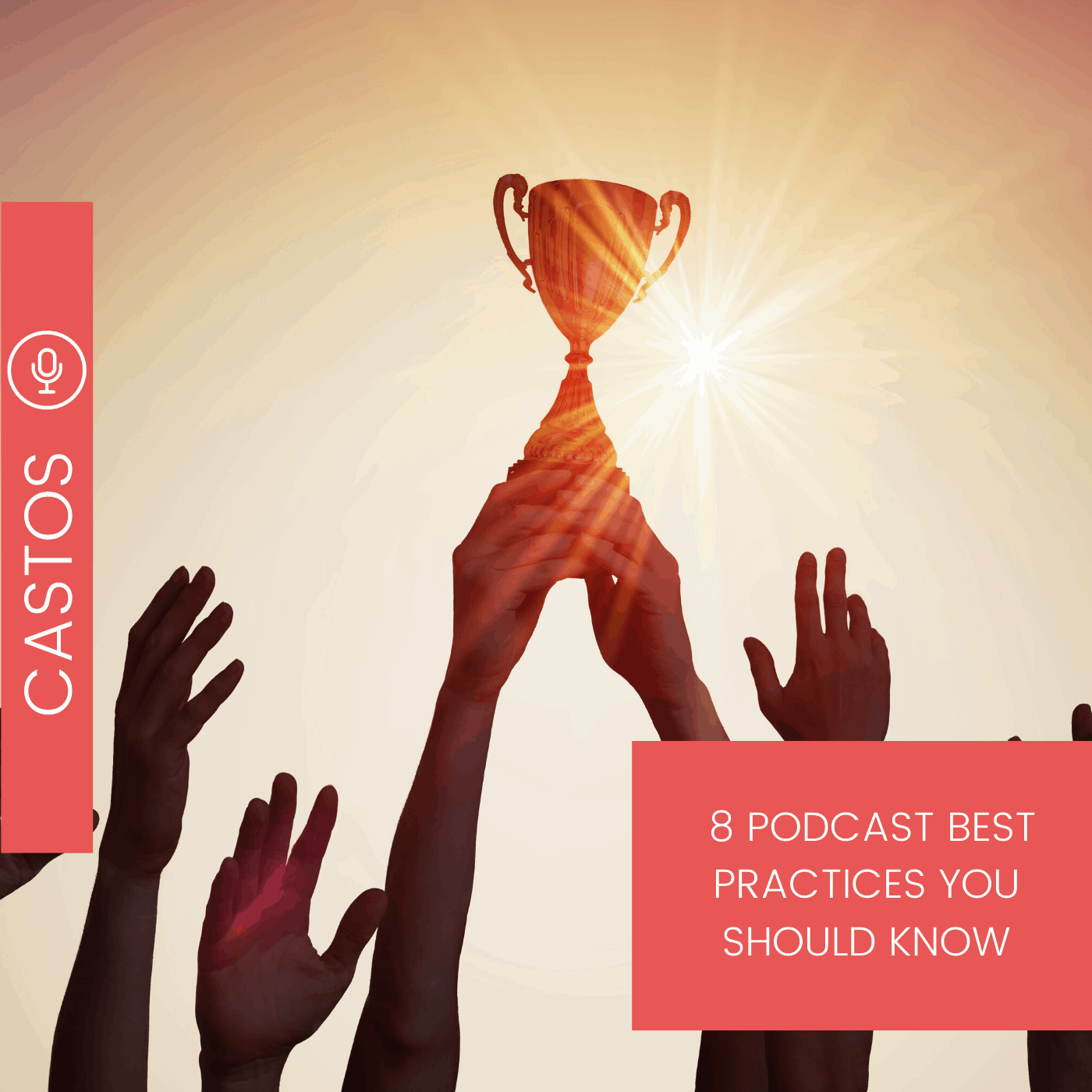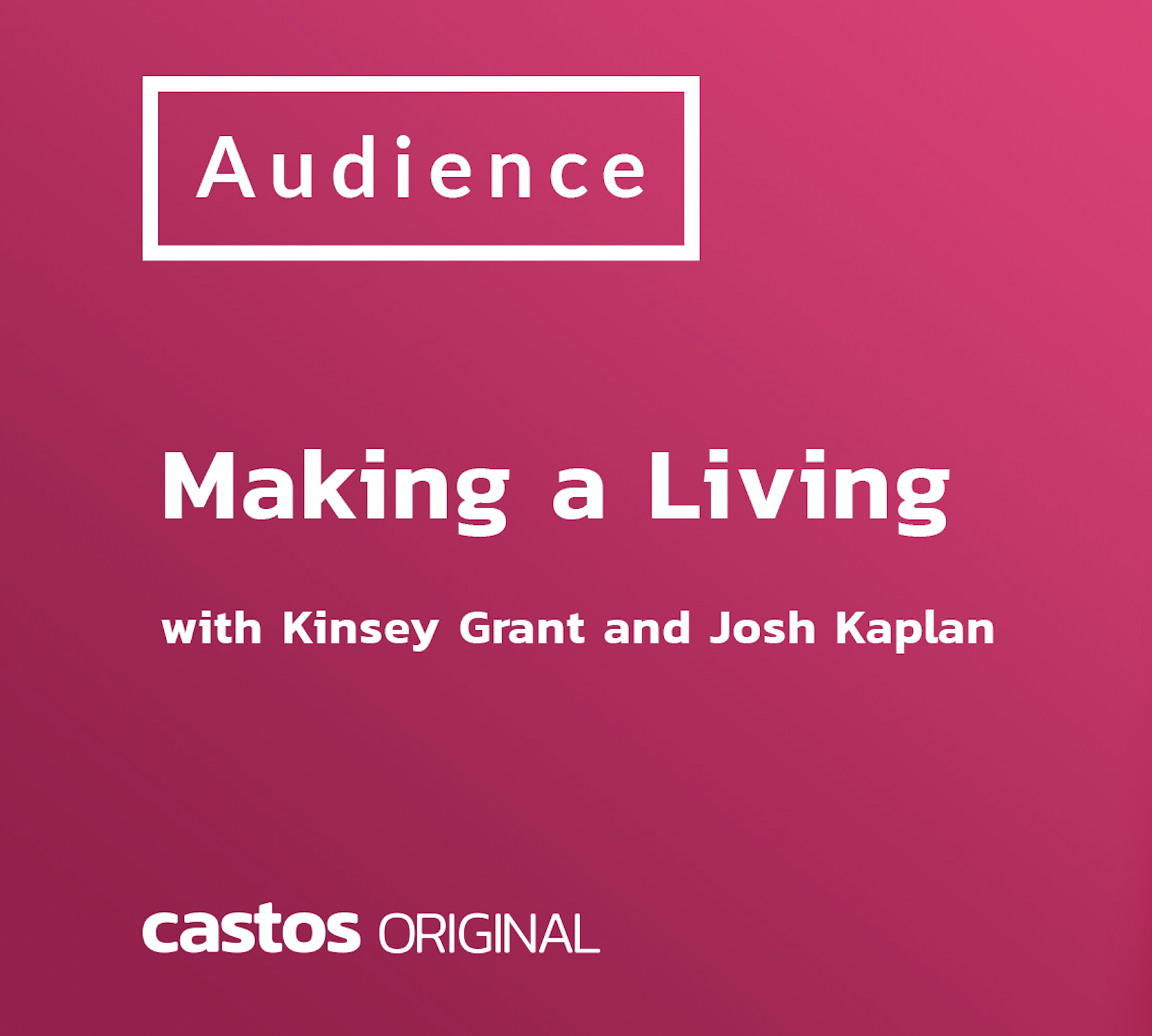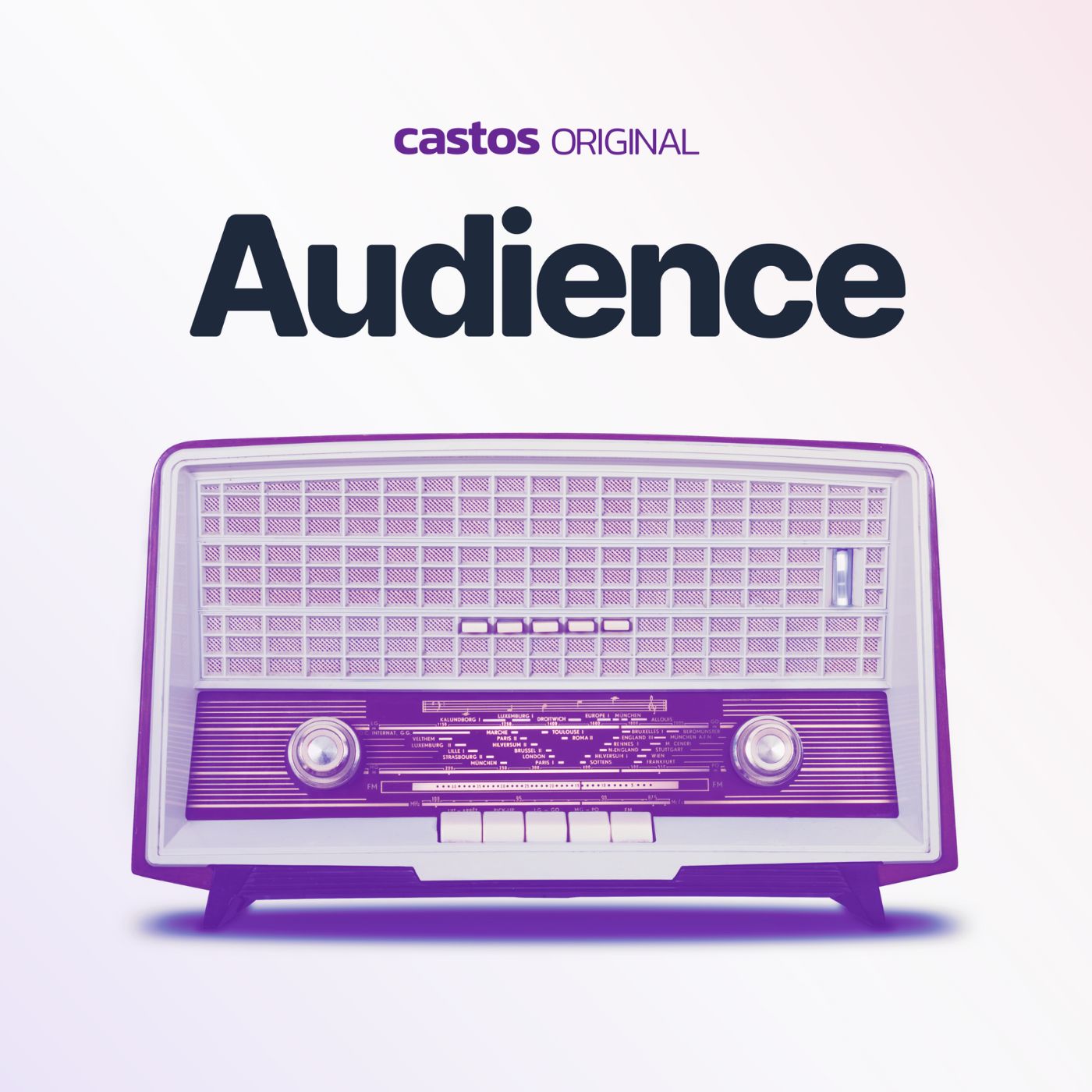Episode Transcript
Speaker 1 00:06 Hello and welcome back to the audience podcast. I'm your host Craig Hewitt from Costos. Today we're going to talk through two things, really. One is to take some listener questions and answer them here on the show. And so again, listener questions come directly from our Facebook group called podcast hackers. If you're not a member of the podcast hackers group already, go to Facebook and type in podcast hackers and the search and uh, we'll get you admitted there straight away. There's a lot of really kind of lively discussion there about troubles that people are having or obstacles they're trying to overcome and ways that they're trying to improve their show. And we're going to take a couple of those questions from the group and answer them on the show, or at least give my opinions on it today. Uh, the nice thing about a thing like a Facebook group is there's a lot of different perspectives and experiences and opinions on a particular topic.
Speaker 1 00:55 Uh, so if you have a burning question or issue or where you wanna improve your show, a Facebook group is a really great way to get a bunch of different perspectives on how you can do that. And, but, but first we're going to start with a kind of an announcement for us here at <inaudible>. We have for a long time had a podcasting course called podcasts like a pro. Uh, this is about a 25 lesson course that really walks all the way from a to Z about the whole kind of podcasting stack and journey. And here in the, in the midst of the coronavirus pandemic, we're offering the course entirely for free. So it used to be a paid course, much like some of the other podcasters out there that have paid courses, some of them charge, you know, four or $500. Uh, and, and we're making our course entirely free and it will always be entirely free from now on.
Speaker 1 01:41 Uh, we, we feel that, you know, knowledge is power and to be able to share a little bit of what we know with you all and for you to make better and longer lasting and more impactful podcasts just makes our community better. So really excited to be launching this as an entirely free resource for you and everyone out there in the podcasting world. And just to give a bit of more information about what the course is all about. So it's about 25 modules right now and we'll be adding to this over time as new topics come up, as we learn new things, we'll be adding to this and you'll continue to have entirely free access to this for life. And so just to walk through a bit about what the course covers, we start with audience theming and personas, really answering these kind of wire, you podcasting, and who are you podcasting for and what is the goal of your show?
Speaker 1 02:29 Uh, from there we walk into gear and set up, this is a hot topic with a lot of folks and we'll, we'll kind of cover this as one of the questions from the podcast hacker's group today, but this is things like Mike's and recording software and editing software. And then we go into the actual process of recording both locally on your computer, using a tool like audacity and then doing a remote interview like many of us are needing to do these days. Uh, using a tool like squad cast and then preparing that audio for your first few episodes. So things like ID, three, tagging, preparing, show notes and getting those first episodes published. And then going through, setting up your website and your media hosting platform, configuring your RSS feed. And then lastly to submit that podcast to all the popular podcasting directories, Apple podcast, Stitcher, Google podcasts, Spotify, uh, and the new one on the block YouTube.
Speaker 1 03:21 And then looking at how and when and what you need to consider when you're launching your podcast. And then after you've launched, how to grow your audience. Really what this podcast is all about. But, but in a course format and then what your options are around monetization. So really kind of run the gamut a to Z. Uh, so this is a few hours of video content with downloadable resources altogether and again, completely free, no strings attached, no fancy upsells at the end. We just want this to be a really great resource for you and the rest of the podcasting community and, and be a way for us to share what we know about creating a podcast for you to go be successful in this medium. So check it out, <inaudible> dot com slash course we'll have a link in the show notes as well, but just head over to <inaudible> dot com slash course dropping your email and you get full access right away to the entire course contents.
Speaker 1 04:14 Okay, so now we'll dive into some questions from our Facebook group, podcast hackers. And the first one is, uh, has anyone gotten their podcast into the new and noteworthy section? Looking for some prelaunch tips. And I think the last part of this question is really savvy because this does require a bit of work upfront to do some planning and strategy and coordination to give yourself that best chance of getting into, into new and noteworthy. Uh, this has changed a lot in the years and the five and a half years that I've been podcasting, uh, previously it was almost guaranteed that everyone would get into new and noteworthy, but that meant it wasn't as impactful these days getting into new and noteworthy is much more difficult. Uh, but we have some best practices that you can follow to give yourself the best chance possible, uh, to do this.
Speaker 1 04:57 Uh, and so if for folks who don't know new and noteworthy as a section within Apple podcasts that mentions either new, so podcasts that have been released in the last eight weeks or noteworthy podcasts that are particularly interesting and that they want to feature the latter, the noteworthy can happen anytime and is a bit more subjective. There are reviewers at Apple that pick out podcasts that are either trending recently or a or that they feel are particularly helpful for, for their users to highlight and to, to bring to the front. And really we'll cover the things you can do to get your podcast into new and noteworthy from the new perspective. And again, this is in the first eight weeks after your podcast has been launched. Uh, so to start with, the first thing is to launch with a couple of episodes and three really seems to be the magic number here.
Speaker 1 05:45 And the question is from some people, do you want to launch with a quote episode zero like a trailer or a teaser episode? I personally like this from a listener's perspective and an episode zero is typically just you know, minutes talking about what your podcast is about, who it's for, who might be interested in it, what you're going to talk about and when you're going to be publishing episodes. Really kind of setting the stage for your podcast and maybe offering a couple of snippets from those first few episodes. These are the really interesting or intriguing clips or sound bites from those first few episodes to get your audience really excited and engaged before they listen to those first real live episodes. And then from there you want to sprinkle on maybe two additional quote real episodes and the strategy with which episodes those are we'd like to, we we say surround the topic of your podcast.
Speaker 1 06:37 So think about maybe a slightly different angle you can take on the main topic you're going to be talking about longterm for your show. Maybe have a guest on one and have a cohost on another or a different type of format or different segments within each of those episodes. And the idea here, kind of the overarching theme is to have something for everyone between those first two or three episodes. So thinking about mixing up the style and the format and the content and the approach you're taking on your overall topic to where different people with different tastes and interests will, will find something that they like amongst those first two or three episodes. And the goal here is to get people to subscribe. So that brings us to kind of what the call to action is with getting into new and noteworthy. And I like the phrase here that the things that you will do to get into new and noteworthy are the things that you will do to create a successful show anyhow, even if you don't get into new noteworthy.
Speaker 1 07:28 So I think this is important to talk about. These are kind of best practices for creating and launching a show the right way. The call to action is always to subscribe and leave a rating and review. Uh, but frankly I think this is too much for most of our regular listeners to do. We can only really ask for one thing at a time and if we're going to ask for one thing, it should be to subscribe so that they are guaranteed to get every episode every time it comes out. So if we're saying that subscribing is the call to action, we want for all of our, our regular subscribers and audience members, then leaving a rating and review needs to be left to somebody else. And for that, I like to leave that to what we call our tribe, our inner group, our core friends and family and coworkers and people in our audience who we feel like we can ask a little bit more.
Speaker 1 08:14 Even now, Apple has made leaving a rating and review a lot easier a more recently in the Apple podcast app. Um, but if you're using a tool like overcast, it's a bit more difficult, but I'm asking your, your kind of core tribe, these five, 10 2050 people that you can email or text or send a message to directly say, Hey, please go leave a rating and review for my show does a ton for this kind of concept of social proof. So if you're browsing through Apple podcasts and you see a podcast with 55 star reviews and you see another one with one four star review, which one are you going to subscribe to? I think it's pretty obvious that the social proof, the amount of credibility that a podcast has on the surface is a lot having to do with the number of reviews that it has.
Speaker 1 09:04 So the call to action for our core tribe, again, friends, family, coworkers, people that you feel like you can ask a little bit more of is to go leave a rating and review to boost that social proof of your podcast in these popular directories and Apple podcast is still the King. The other view things to think about in terms of setting your show up for success is really giving a lot of care and thought to that the title and the description and the categories that your show is going to be listed in and really spending some time, even if it's in using a free resource like Canva or getting a graphic designer to design a really awesome cover image. Uh, we, we think about, you know, it's kind of like scrolling through your Facebook, your Twitter feed, scrolling through Apple podcasts. A lot of times all people see is the cover image and the title or the name of the podcast.
Speaker 1 09:52 And so just think about that when you're designing your cover image and giving your podcast name is you want it to stand out, be impactful, be really easily recognizable what it's about. And who it's for. And if you feel like you've done a good job of nailing all of those, then you've given yourself the best chance possible to be successful when you're launching your show. So hope that's helpful. Giving kind of a framework and a few ideas around how to set yourself up for success, both kind of strategically and tactfully about getting your podcasts ready to launch and what to do right after you launch in terms of call to action for your audience and your core tribe members. The next question was about working out technical issues to make sure you have clean and professional sound on a budget of course is what they said.
Speaker 1 10:36 Uh, and this is really popular one and rightfully so. This is, this is a different format than a lot of us have ever done before. And getting into new things is scary to be honest. I remember my first podcast episodes were frankly terrible and I think anybody who is not a professional, uh, you know, radio host or something will say the same thing. So in terms of working out technical issues, I like to simplify things as much as possible and we run through this in our podcasts like a pro course. Again, casto.com/course entirely free. We have several modules just on this topic, but we'll cover here as well the, the kind of basics of what we like to do. So the first is a really good and really forgiving microphone that you don't need a bunch of other gear to use. Uh, for me, for my entire podcasting career, basically this has been the audio Technica ATR 2100.
Speaker 1 11:28 They've recently come out with a new model which is for USBC. So for the newer Mac books, the USBC connector, uh, but this has been kind of the stalwart of the entry level serious podcast or I would say, uh, it's about $75 on Amazon. I think the newer ones may be a hundred dollars. And if you're getting up into the hundred dollar range, you also could check out the road mini USB. And we'll have links to each of these in the show notes for this episode. But I think either way, the goal here is to get a USB microphone that is really forgiving and you don't need a perfect environment to record your episodes in, and that's really the key is that getting a microphone like the blue Yeti is a really fantastic and really sensitive microphone. And if you're not in a sound studio, it's going to sound really bad.
Speaker 1 12:16 And a lot of us are not in professional sound studio, so we need a really forgiving mic. And so either the audio technical mic or the road mic that I mentioned, again, links are in the show notes. We'll give you this really high quality sound in a forgiving way to where you don't need to be in a perfect physical environment. Both of these mikes are USB mic, so they plug right into your computer and you don't need to know what a preamp is or anything like that. Again, it's just one more thing to, to confuse us, Frank, frankly, and I think give really kind of marginal gains to the quality of our sound, especially if you're just getting started from there. It's from a software perspective for recording. Audacity is a free open source tool. It works on both windows and Mac for recording locally like I'm doing now.
Speaker 1 13:00 And if you're recording with folks that are not in the same location, so across the city or state or country or the world, using a tool like squad cast is the way to go. They are fantastic. They're on the podcast a couple of episodes ago and have by far kind of the best way to record content online. It's in the browser, it's about $20 a month. So you have to spend a little bit of money but totally worth it if your goal is to have really high quality sound in a simple way. And kind of going back to, to gear aside from a really good mic, again, the audio technical or the road mic that we mentioned having a pop filter. So it's kind of this screen that sits between your mouth and the microphone and a boom arm, which is, uh, this kind of articulating arm that attaches to the desk or the table that you're podcasting at, and then puts the mic right in front of your mouth at the kind of vertical level of your mouth so that you're not talking up or down, both of which changed the characteristics of your voice to where you sound either more high pitched or more low pitched than you should normally.
Speaker 1 14:00 Uh, so, so that's a bit of kind of gear and set up and Mike technique that hopefully gets folks started on the right path. Next question was, where do you get sound and sound effects? This is a, this is a really big question and there's a bunch of resources out there. The tool that we use is called audio blocks. So audio blocks has a monthly subscription. If you're going to be getting new sound a lot for your podcast, you might want to check that out. Another few places to check out our premium beat audio jungle and pond five. Each of them have options to buy just single tracks. And again, if you're not having different music for your podcast and every episode, then one of these kind of one off purchases is probably the way to go. You would spend a couple dollars for a track and then you don't have to attribute this each time.
Speaker 1 14:44 And that's really the key is um, kind of mainstream music is definitely kind of off the table because it's not what's called commons licensed. So it's not been approved for use by folks like us as podcasters to be to use in our shows. There is a kind of categorization of this, which is called creative commons, which is where an artist will create something and say, yes, you can use this in your podcast as long as you attribute it back to me every time you use it. A podcast that I listened to, it uses this music and at the end of every episode they have to say this music comes from this artist and is used under creative commons. And so that's fine. As long as you're, you're willing to include that snippet at the end of your episodes, there are free ways to do this, but just know that creative commons means that you do have to attribute the sound or the music that you used back to the artist every time you use it, which for us means every episode.
Speaker 1 15:36 Last question we're going to cover here is about show notes and this is a really kind of near and dear thing to my heart here for this podcast because for those of you who have checked out the show notes we use for the audience podcast year, you'll know that we spend a lot of time on them. And in our episode with Kevin Lee from buffer, uh, they follow a similar format where, where they really think of their podcast episodes as having the same importance in terms of length and in depth ness as their blog content. And for us, we read our blog content to have somewhere like 2000 words. So you know, four or five pages of content per post. And we try to do the same with our content. For our podcast episodes. We don't want to go to all the trouble of creating a really great audio resource that then website visitors and search engines like Google can't index and resource and refer back to as a really great resource on a particular topic.
Speaker 1 16:29 So we think of creating podcast episodes as a great resource for our listeners, but we also think of it as a great resource for our website for people to come find out about us and our brand and we write our show notes in a way and to an extent to to hopefully reflect that. And so the way we go about this is once our episode has been edited by our audio engineers that cast productions, the episode gets moved on to a team of show note writers that then listen to the episode they're not and they're not worrying about editing at the same time. The episode is already finished and then they listened to the podcast and write the show notes as they go in. Our show notes typically follow a format of having a kind of a summary over a handful of paragraphs about what the episode is about.
Speaker 1 17:14 And then having a section that gives bullet points of, in this episode we talk about this and this and this topic and that topic and this reference. And then we go into a resources mentioned section that has all of the links and people's social media handles that we mentioned on the episode. And so for this episode B thing, like things like all of the microphones I mentioned, all of the royalty free music libraries, you mentioned the course, you know, cassius.com/course all of these places. And again for, for a lot of people, show notes are a resource for listeners to refer to to see what was that person you mentioned or what's that website that Craig said. Uh, so they go and just click through from there. Uh, but it also is, it should be kind of a written account of your podcast. And that's why the the top sections there, try to summarize what the show is about and then give a really clear and concise bulleted list of the topics that we discuss in each episode.
Speaker 1 18:09 So I hope that helps. But we do, we do listen back to the whole episode from start to finish and write the show notes as we're listening. Uh, and so it takes about twice as long as an episode is. And so this episode will be 20 minutes in length and so it'll take our writers 40 or 45 minutes to kind of write as they're listening and then they have to stop and go find a link and insert the link. And it's a bit of a manual process, but we do think it creates some really great show notes and resources both for our listeners and for website visitors who haven't listened to the episode yet or aren't subscribed to the podcast. Great. So I hope everyone enjoyed those questions and kind of our thoughts on those. Again, if you're not part of our Facebook group, go check out podcast hackers on Facebook and please go check out our new free course.
Speaker 1 18:54 Again, there's no upsells or any fancy strings attached, but uh, Castillo's dot com slash course for our podcast, like a pro resource there. Again, it's about 25 modules or lessons walking folks, really a to Z through what it takes to create a really great podcast and you can kind of listen or check it out piecemeal if you'd like. If you want to check out our particular section, you certainly can entirely free. Please go check it out. If you have any questions for us, you would like answered an upcoming shows, drop those in our Facebook group. We hope you all are happy and healthy and enjoying this time as much as we can. Best of luck. If we can do anything to help, please let us know. Okay.





